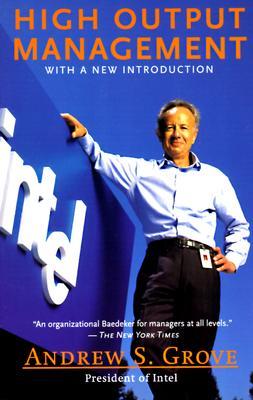
It won’t be exciting to live in a world obsessed over achievements. Similarly, I think it is challenging for a company to succeed by simply obsessing over achievements. Everyone will end up focusing too much on precise outcomes that go obsolete in a rapidly changing world. But, of course, it is unwise not to care about achievements. Consumers won’t choose your product because you built a great company culture, and the company’s success is inevitably tied to its output. Thus, it is a billion-dollar question of how to establish a company that produces excellent results continuously.
Andrew Grove gives us valuable insights into building a great company based on his experience leading Intel to a world-class business. It has been 35 years since the book was published, but his wisdom is timeless. Ultimately, we are talking about the problem of delivering output to consumers effectively, which is continuously relevant in a market economy. To show how foundational the mechanism is, he uses an example of a simple restaurant serving breakfast. A seemingly simple problem of serving coffee and eggs isn’t as straightforward as it sounds when considering quality control, customer satisfaction, and efficiency. The system gets much harder to control as the business scales and hires more employees. This book shows how you can manage an organization, lead meetings, make decisions, plan future products, and inspire employees for high output.
Silicon Valley, his home ground, has already adopted many of his suggestions and improved with better tools (e.g., email, video calls, excel, script language). A few examples:
- A manager is responsible for the team’s output, not an individual one. With this in mind, the manager should judge when to use leverage and delegate to maximize the overall output.
- A manager keeps occasional 1:1s with all the direct reports (roughly once in 2-3 weeks). There’s no restriction on topics, but let the report lead the meeting. With this, the manager can understand details better, and reports can effectively bubble up important issues worth more visibility. Managers can still discuss reports outside 1:1s, but this regular meeting can be an anchor to ensure continuous streams of information.
- Make decisions based on data, not on the manager’s gut feeling. For this, data sanitization and management are vital.
- Be picky about hosting meetings. If a company pays $100 per hour per employee, a habitual meeting of 10+ people has a price tag of $1,000.
The lessons may not be readily applicable in every field or every country. However, I think the book addresses the fundamental problem of keeping output high efficiently. The problem affects us broadly because it won’t be pleasant to live in a society where companies can thrive without solving this problem. But, again, obsessing over fixed achievements won’t be enough. Instead, we need to focus on the continuous process that can keep generating great results under different circumstances. As each problem won’t be the same at each moment, we need to find solutions on our own, and this classic book can provide excellent aid. ∎
More books to recommend:
- Radical Candor — Kim Scott
- The Lean Startup — Eric Ries